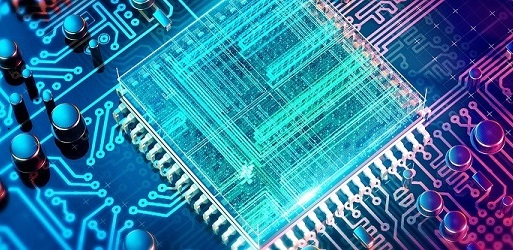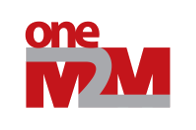ETSI TC Smart Card Platform, that standardized the former generations of SIM cards, has been working on a brand-new security platform called Smart Secure Platform (SSP). The ETSI committee has unveiled the first three technical specifications to launch this new security platform.
The ETSI Smart Secure Platform offers an open platform for multiple applications with various physical interfaces and form factors. The new flexible file system and built-in capabilities support several authentication methods, as well as features defined for a UICC - the current security platform used, for instance, for the SIM card - such as a toolkit or a contactless interface. SSP is a highly secure, scalable, thus cost-efficient solution optimized to fit many requirements, from IoT applications to complex solutions, hosting several applications such as banking and payment, ID management and access to mobile networks. Furthermore, the SSP is backwards compatible to the UICC. The three specifications cover the general technical characteristics of the Smart Secure Platform with ETSI TS 103 666?1, the integration of the Secure Element into a System on Chip (SoC) solution in ETSI TS 103 666?2 and, as the first protocol between the Smart Secure Platform and the outside world, the Serial Peripheral Interface (SPI) which is specified in ETSI TS 103 713.
Blockchain and Distributed Ledger Technologies (DLTs) are among the most promising developments in ICT for sharing data and managing transactions in a decentralised, controlled manner. The use of Blockchain and DLTs continues to grow rapidly, notably in the context of Industry 4.0, thus creating both new opportunities and challenges for business and society. In order to contribute to ensuring a smooth and safe adoption of new technologies in Europe, CEN and CENELEC recently established new CEN-CENELEC JTC 19 ‘Blockchain and Distributed Ledger Technologies’, based on the recommendations presented in the CEN-CENELEC White Paper on ‘Recommendations for Successful Adoption in Europe of Emerging Technical Standards on Distributed Ledger/Blockchain Technologies’.
The European Commission (EC) has published recommendations by a group of experts, the Strategic Forum on Important Projects of Common European Interest (IPCEIs), to boost Europe's competitiveness and global leadership in six strategic and future-oriented industrial sectors: Connected, clean and autonomous vehicles; Hydrogen technologies and systems; Smart health; Industrial Internet of Things; Low-carbon industry; and Cybersecurity. IPCEIs comprise innovative research projects that often entail significant risks and require joint, well-coordinated efforts and transnational investments by public authorities and industries from several Member States. In addition to recommendations specific to each of the value chains, the report also identifies horizontal enabling actions:
- Pooling public and private resources at EU, national and regional levels; The EU should coordinate these joint investments, targeting first industrial deployment and the commercialisation of new technologies;
- Deepening and integrating the single market through regulations and new standards;
- Mapping and developing the skills needed across the value chains;
- Making innovation systems in Europe more dynamic, with a focus on public-private partnerships;
- Setting a governance process to monitor technological and industrial changes, etc.
A new joint whitepaper released by The Industrial Internet Consortium® (IIC™) and oneM2M, reveals how developers seeking to reduce complexity when designing Internet of Things (IoT) and Industrial Internet of Things (IIoT) systems, can leverage different architectural approaches side-by-side to enable faster-time-to-market of new Industrial services and use cases. The joint whitepaper, “Advancing the Industrial Internet of Things”, demonstrates how these two leading IoT organizations are working together to advance the IIoT and digital transformation, through the creation of a robust, interoperable, flexible and efficient IIoT ecosystem. Through their work, the IIC and oneM2M aim to help vertical markets achieve interoperability and reusability, by minimizing complexity and the cost of designing, developing and deploying IoT and IIoT systems to shorten time-to-market and value-creation cycles. With a focus on practical deployment tools, the white paper describes how the IIC’s and oneM2M’s architectural approaches can be aligned to provide a toolkit of best practices and technical standards for organizations involved in the design and deployment of IIoT systems.
EU-wide Cybersecurity legislation: implementation of the EU rules in the energy sector
The European Commission has just published a report with key findings on how the EU cybersecurity rules under the NIS Directive are implemented in the crucial Energy sector, in particular in electricity, gas and oil areas. The report takes stock of the implementation of the main NIS Directive requirements across the EU, notably on the ways to identify the so-called Operators of Essential Service (OES), security measures, incident notification requirements. The report includes information on governance models chosen, lessons learnt and best practices at national level and presents cybersecurity capabilities of EU associations, organisations and bodies with a role in the energy sector. In addition, it provides an overview of the different public-private collaboration schemes in place across the EU. In line with the Commission Recommendation of 3.4.2019 on cybersecurity in the energy sector, the document supports Member States in addressing energy sector specificities, such as real-time security requirements, cascading effects and the combination of legacy and state-of-the-art technologies, when implementing the NIS Directive.










